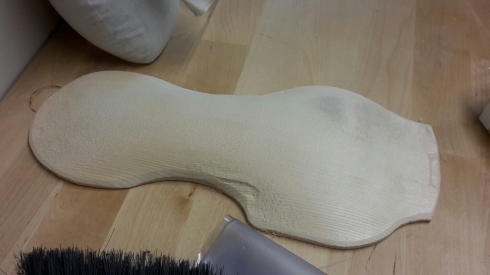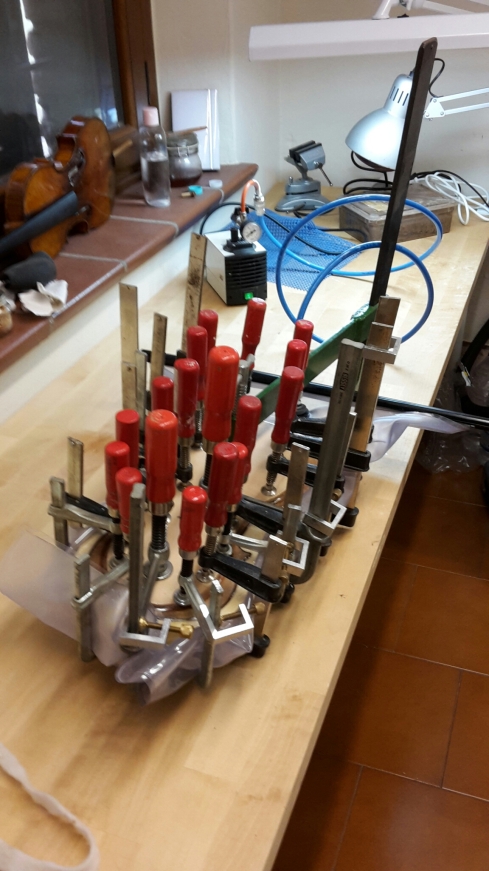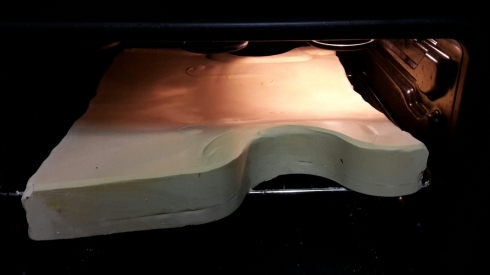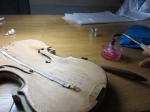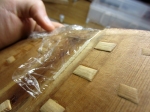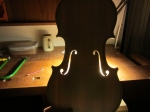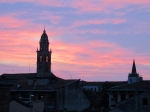Over the last two days we used a vacuum pump quite a lot.
Here you can see the patch made to correct both the arching and thicknesses of a very old violin top.
After heating the patch, the top, and the cast with the corrected arching, the pieces were glued together. The heat gives a longer work time to the natural animal flute that we use.
In order to properly close the two, we used the vacuum pump first (which gives an equal pressure over the whole piece) as well as a lot of clamps.
Today we made a cast of part of a cello top that needs a new sound post patch. The top was put in a vacuum bag to make the most accurate cat possible while protecting it from damage.
We then mixed the plaster and poured out into the blocked off area needed to support and hold the top stable throughout the restoration.
Here it is drying in the oven.
Finally, here is a picture is of the sunset over the cremonese countryside. It was the first day without rain in almost two weeks.

